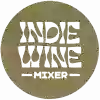About the Size of It
When out to dinner the other night, we noticed a lot of bottles on the wine list that were larger and smaller than the normal ones. What are the advantages and disadvantages to these sized bottles? Would there be any reason for buying them to have at home?” - Jamie (McMinnville)
Don’t you just love alternative format bottles (says the über wine geek in me)? There are several advantages and disadvantages to these smaller and larger sizes. Let’s start with the traditional bottle, so we have some perspective.
A standard wine bottle is 750 ml (milliliters), or about four to five glasses. Most mini bottles are 375 ml, or half the standard size, hence the name “half-bottle.”
The advantage to these small guys, especially when dining out: You can start with a bottle of Champagne to toast, then move to a lovely white with appetizers and finally enjoy a red to go with your entrée — all without breaking the bank or having to be carted out of the restaurant afterward.
Here’s another advantage: Let’s say you are having something light for dinner, maybe fish or a light salad, and your date has ordered something on the heavier side that won’t pair well with the wine of your choice. With the smaller formats you can each get your own bottle and pair your wine perfectly with your food. Or, if you don’t like what you see by the glass, check out the half-bottle section; they are equal to a little over two glasses.
Half-bottles also make great gifts. You can give a more diverse selection of wines for the same price. Added bonus: They fit nicely into stockings — Santa, if you are reading this, please take note.
The downside to half-bottles is they really don’t age the wine that lives in them as well as the larger formats. The bigger the bottle, the better the aging.
Aging half-bottles probably won’t hurt the wine, but better to save the aging for the 750s or bigger because the juice-to-oxygen ratio is smaller. More juice means less air, which equals less effective aging. Large formats come in a variety of names, most of which are derived from biblical folklore. The most common ones are: Magnum: 1.5 liters (equal to 2 bottles); Jeroboam (or Double Magnum): 3 liters (4 bottles); Methuselah: 6 liters (8 bottles); Salmanazar: 9 liters (12 bottles); Balthazar: 12 liters (16 bottles); Nebuchadnezzar: 15 liters (20 bottles)
These are great to order at restaurants for private parties and even more fun to bring to holiday gatherings — especially when the party is at my house. Bonus: Who needs a giant card for everyone to sign when you have a giant bottle and a paint pen? Another excellent idea for Santa.
Enjoy the variety, the wine and the season. Cheers!
- Jenninfer Cossey
I look forward to receiving more of your questions. E-mail me at jcossey@oregonwinepress.com to submit your questions, and I’ll see you next month!












